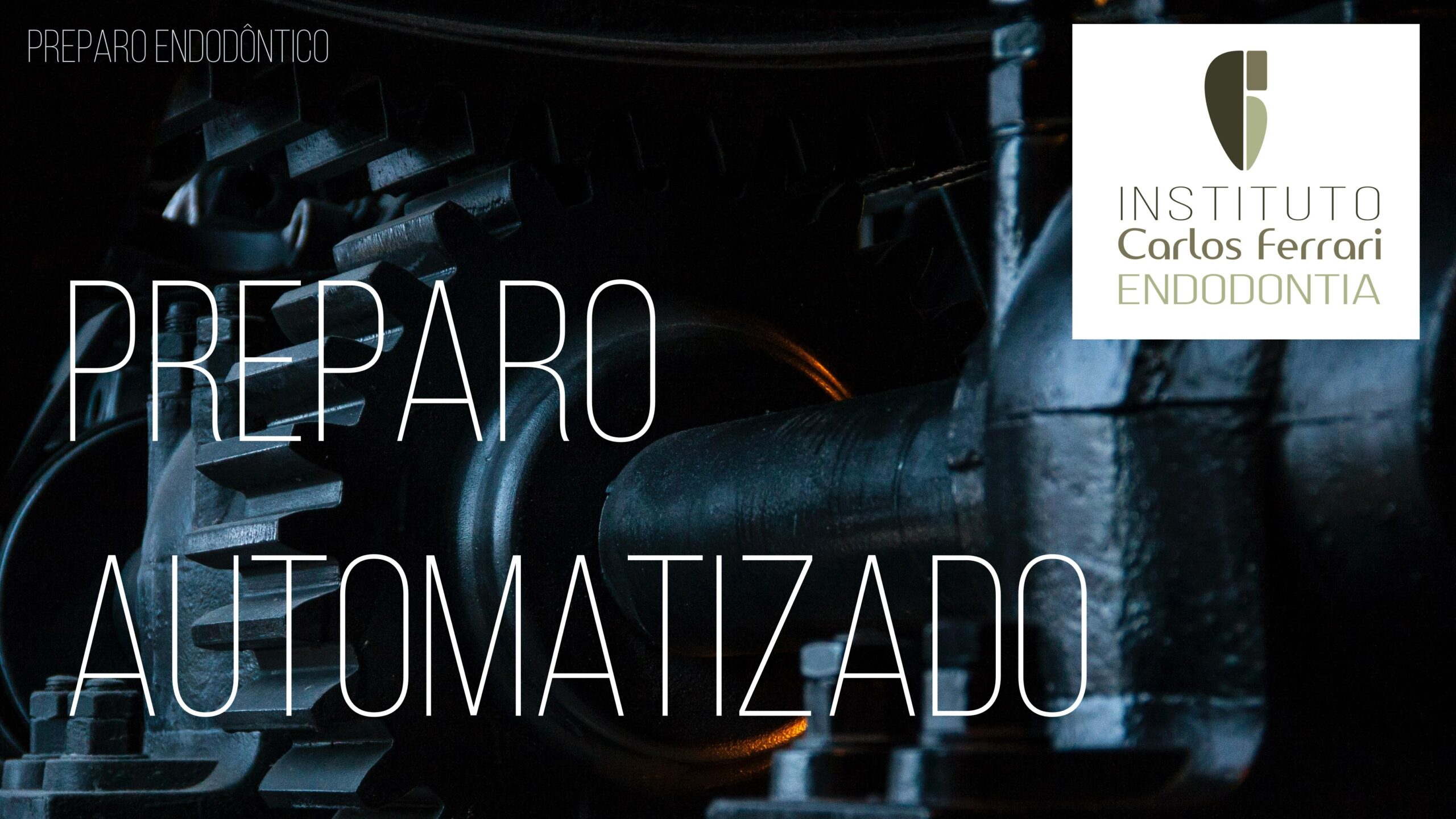Automated endodontic preparation. 3rd in the series of lectures on endodontic preparation
Introduction
Oscillatory motion
Rotational movement
Reciprocating movement
Glidepath
Cervical preparation
Foraminal widening
Hybridization
Preparation Sequence
Mechanized endodontic preparation in: Semaan et al. Mechanized endodontics: the evolution of continuous rotary systems. RSBO v. 6, n. 3, 2009
Introduction
For successful endodontic treatment, it is essential that the root canal be perfectly cleaned, shaped and disinfected, and that a tapered conical shape similar to its original form be obtained, thus providing the conditions for the root canal system to be hermetically sealed. Without a doubt, the phase that presented the greatest transformations in the last years was the root canal preparation, in view of the gradual "substitution" of manual preparation by the automation of shaping techniques. Rotatory instrumentation, or the mechanization of the root canal preparation stage, as it has been called nowadays, is undergoing a process of inevitable adoption by specialists, and is in constant evolution. Every day, new motors and instruments are introduced in the market and new professionals are conquered, since the rotary instrumentation promotes faster root canal preparation and less stress for the professional and his patients during the endodontic therapy.
Since the introduction of nickel-titanium alloy in Endodontics and the subsequent development of rotary instruments, several researches have demonstrated the superiority and speed in the conclusion of biomechanical preparations performed by mechanized instrumentation. Several scientific studies have tried to analyze the efficiency of these instruments in root canal preparation, regarding the cleaning promoted in the dentin walls and the final shape obtained in the modeling, as shown in several studies.
Another important factor to be considered during cleaning and shaping is the internal anatomy of the tooth in question, since flattened root canals can be considered true obstacles to adequate rotatory preparation of the root canal. Regarding root canal cleaning by the action of the irrigating solution, several research and clinical experiences have demonstrated that sodium hypochlorite (NaOCl) has physicochemical characteristics that are compatible with the basic requirements of an ideal irrigating solution. Sodium hypochlorite 5% is reported in the literature as the most efficient solution for cleaning root canals, as shown in some studies. However, the same authors are unanimous regarding the biocompatibility of the solution in such concentration, and some suggest reducing the active chlorine content to 2.5%, thus minimizing its deleterious action on periapical tissues. The chemical-mechanical preparation of the root canal is the most time-consuming step in endodontic treatment. For this reason, endodontists and the dental materials industry have long been concerned with the creation of systems that allow the modeling of canals by means of automated instrumentation, which facilitates and accelerates the chemical-mechanical preparation of root canals.
To achieve this goal, the last decades were and are being marked by the creation and improvement of numerous instruments and equipment. Thus, due to the constant search for the improvement of rotary systems, this study aims to perform a literature review on the most recent advances in the mechanization of root canal preparation.
Automated endodontic preparation.





